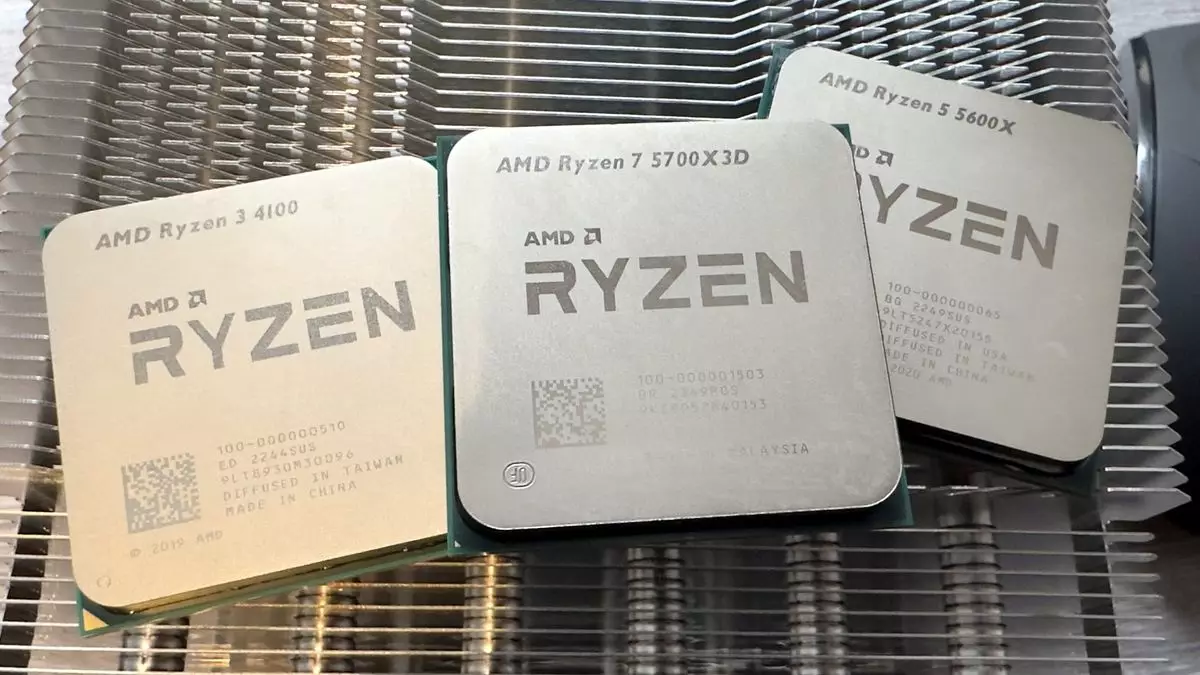As the semiconductor landscape continues to evolve, AMD has demonstrated an impressive dedication to its AM4 platform, even amidst the launch of the next-generation AM5 Ryzen 9000 series. This article will explore AMD’s strategy involving the anticipated Ryzen 5000 series CPUs, delve into their potential specifications, and evaluate what this means for consumers and gamers alike.
AMD appears set to extend the lifespan of its AM4 platform with the introduction of two new processors: the Ryzen 5 5600T and 5600XT. This move is particularly noteworthy as it signals AMD’s intent to continue leveraging its existing architecture to provide additional value to consumers despite the looming arrival of more advanced models. The leak of information regarding these CPUs, particularly from the likes of momomo and VideoCardz, suggests that AMD has not yet fully closed the door on the 5000 series, which has already seen a variety of releases, including the Ryzen 5 5600X3D and the Ryzen 7 5800XT.
The crux of AMD’s strategy seems to hinge on refreshing existing models rather than introducing entirely new architectures. Taking the example of the ‘T’ suffix, which historically indicated low-power variants, it has become apparent that AMD is deviating from this convention. Recent entries such as the Ryzen 5900XT challenge the idea that ‘T’ models are inherently lower in power or performance, as they boast the same TDP as their non-T counterparts while offering enhanced core counts. This transformation suggests a shift in the naming convention that could leave consumers questioning the differences between these refreshed models and their predecessors.
As outlined in reports from motherboard manufacturers such as Asus, expected specifications for the Ryzen 5 5600T indicate a potential increase in base clock speed, possibly reaching 100 MHz higher than the Ryzen 5600X. However, in gaming scenarios, where boost clock performance is paramount, the differentiating factors still remain speculative. Previous trends have shown that AMD often raises boost clock capabilities with new refreshes, such as the increase witnessed in the 5800XT compared to the 5800X. If AMD can successfully deliver these enhancements while reducing price points, the Ryzen 5 5600T and 5600XT could represent significant value for budget-conscious gamers and PC builders.
At present, the Ryzen 5 5600X is available for approximately $128 on platforms like Amazon—indicative of its enduring relevance within the gaming CPU market. Imagining a scenario where AMD can introduce the 5600T and 5600XT for $10-$15 less, while improving on both base and boost clock performance, could lure those running older AM4 systems looking for economical upgrades. Such a move would not only position AMD advantageously against competitive offerings but also serve the needs of gamers unwilling to invest heavily in new hardware.
While the fate of the Ryzen 5 5600T and 5600XT remains uncertain until AMD officially confirms their release, the speculations grounded in prior refresh trends offer a glimpse into a promising future for consumers. If AMD adheres to historical practices of incremental upgrades and competitive pricing, we may soon witness an influx of accessible yet powerful options for gamers operating within the AM4 ecosystem. The continuation of the Ryzen 5000 series serves as a testament to AMD’s responsiveness to consumer demand and its strategy of maximizing the capabilities of its existing platforms, ultimately emphasizing its commitment to the gaming community and PC enthusiasts alike. As always, the anticipation for these upcoming products remains high, and we look forward to seeing how AMD shapes the next chapter of the Ryzen lineup.

